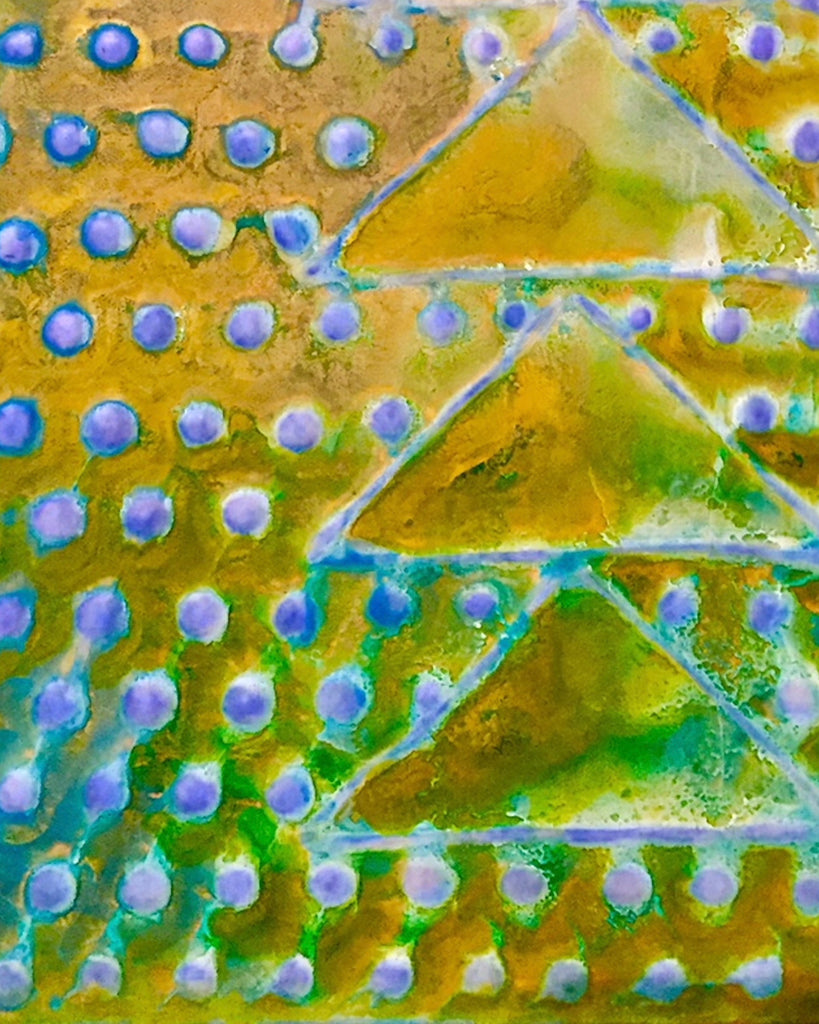The Great Basin Artist’s Show

The Great Basin Then and Now—First Peoples and Artists Today
The area known as the Great Basin of the American West has always encompassed the state of Nevada. One thousand years ago, however, this geographic region extended much further into the surrounding states than it does today. The arrival of Westerners brought significant alterations to the watersheds and aquifers, reducing the Great Basin from over 300,000 square miles to less than 200,000.
The area contains dozens of mountain ranges running in north-south directions with broad high elevation valleys between them. For several millennia, there’s been scant precipitation throughout the entire region. Within this overall area is The Great Basin Desert. Referred to as a high or cold desert, it’s the largest in North America.
Both the lack of precipitation and the subsequent locations of sporadic yet rich aquifers were the overarching factors shaping the awareness, lives and cultures of the First Peoples of these lands.
The Northern and Southern Paiutes, Shoshone, and Utes occupied this area for several thousand years as hunters and gatherers, a nomadic lifestyle guided by the available food supplies. Elevation mattered. Lower areas with lakes were more hospitable in winter; higher elevations offered respite from summer heat. Thus, the people were intimately attuned to the seasons and naturally occurring cycles.
The people existed extensively, rather than intensively as occurs today. Utilizing resources that the land provided, they minimally harvested and altered raw materials into utilitarian items. Woven baskets of willows or grasses had multiple uses; simply bound branches, sticks, and sometimes grasses created the iconic wickiup shelter.
Few possessions were carried over long distances. People traveled lightly, often caching items of any significant bulk or weight such as metates, tule reed duck decoys and canoes. By today’s standards, the daily life of The First Peoples of the Great Basin, their cultures, and the natural world were woven into a seamless fabric of being.
Today, dozens of towns like Eureka—along with the metro areas of Reno, Las Vegas, and Salt Lake City—now lay upon the landscape of The Great Basin and are connected by the grey-black lines of asphalt highways, some running east-west and bisecting mountain ranges through high, partially forested passes.
Deep wells, irrigation systems, and dams have allowed for the creation of small green zones, havens for ranches with small herds of domestic livestock. Multiple micro communities of pre-fab and mobile homes have sprung up in parched areas that offer little more than a getaway from urbanized civilization.
Mining operations at numerous sites pierce into the ground, bring out the entrails of the Earth, and spread it about in heaps of tailings. Oil and gas drilling sites proliferate, adding rusting heavy-duty equipment along beaten dusty roads. Overhead, military jets zip and zing throughout the skies of Air Force Training Ranges.
Despite these dramatic alterations, descendants of the First Peoples remain in the region. Some are on small parcels of traditional land with the largest of the twenty-some Homelands being the Pyramid Lake Reservation at 750 square miles. Not surprisingly however, many Great Basin Peoples now live in towns and cities, which provide greater access to supplies, schools, economic opportunities, and health care.
Among the current descendants are professional artists. Some of them use strictly traditional imagery and craftsmanship in their work, others combine these aspects with contemporary materials and concepts. No matter the approach taken, their artistry carries astute cultural understandings gleaned during simpler times.
Melissa Melero-Moose, Northern Paiute, lives in Western Nevada. She holds art degrees from both the prestigious Institute of American Indian Art in Santa Fe and Portland State University. An artist, writer and founder of the Great Basin Native Artists collective, her contemporary mixed media paintings offer images drawn from the consciousness of her people.
Melissa incorporates organic objects such as sand and pinions nuts onto a canvas with acrylic washes to create a layered and dimensional look to her pieces. She states, “I view these works as a personal collaboration of my culture, individual development, and curious expression of the world around me. My intention is to share with others the beauty of the Great Basin area, people, and culture.”
A renowned abstract artist in Sisters, Oregon recently said of her works, “They’re meditative, quiet, with a spiritual quality that is somewhat understated. Every piece has a personal focal point for a person, allowing them to enter the work. They’re really good!”
Joey Allen, Paiute and Shoshone, grew up and continues to live in the Fallon, NV area. He’s a reed craftsman in the most traditional sense, as well as a local guide. The area of nearby Stillwater contains lakes, where ducks have long been hunted. Like duck hunting today, decoys were traditionally used to bring the waterfowl closer to the hunters.
Joey apprenticed under master Paiute Thule Decoy maker Martin George in the 1990’s. This area, the Lahontan Valley, once held the largest lake in the American West. It was a major nesting area and flyway for the waterfowl of North America’s Pacific region. Joey’s decoys could have been used in the old days to lure in ducks; today, they can be either works of art or used as hunting decoys.
Tia Flores has Navajo and Aztecan ancestral heritage. Her paternal grandmother’s family made their home in the Nevada Great Basin desert while her maternal side instilled within her the strong Indigenous connections to the Earth. Combined, it is these two ancestral elements that guide Tia as a pyrographer—an artist who creates images with burning tools.
Decorative gourd art dates back 4000 years in the Western Hemisphere as Indigenous Peoples used various tools and ash to inscribe and darken prepared gourds with elaborate, narrative images. Tia drums, masks, totems, and jewelry are delicately embellished with culturally themed designs.